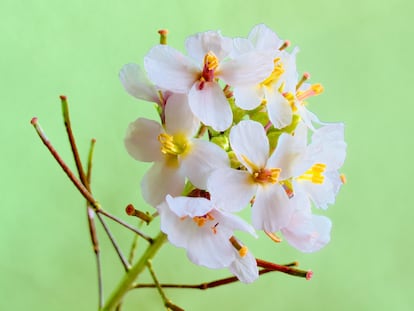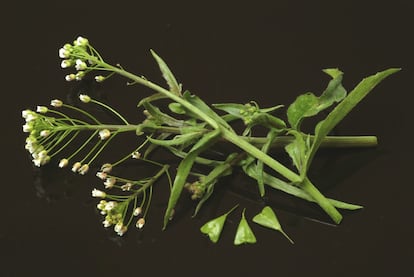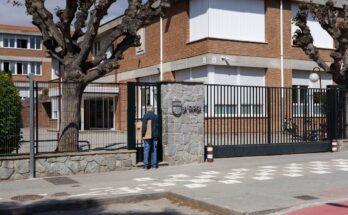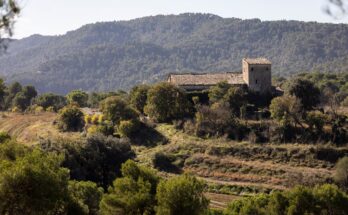The rains return, the urban cracks turn green. At the intersection of the sidewalk and the oven wall, a pair of cotyledons emerge – the first “leaves” that emerge from the seed – of a milk thistle (Silybum Marianum). This little plant, just one centimeter tall, is the daughter of an enormous thistle that grew in the small field in front, a tiny plot of land obtained from the demolition of an old one-story house, built with fine clay bricks. In fact, you can still see the remains of their cooked earth, reduced to a dark orange powder, which returns to the ground on which they rested to form the walls of a house.
The cotyledons of the milk thistle are perfectly oriented towards the light, as if they were a solar panel, and process the water and the few nutrients they find in the crack in the concrete. The pulse of urban grass returns promptly, like every year, with the autumn rains, especially in those regions with dry and hot summers. In addition to this thistle, other wild herbs are now sprouting, to take advantage of the good water coming from the sky and the fact that there are still days warm enough for them, in which they can carry out photosynthesis. One of these most common families is that of brassicas. Many of its members display a flower with four petals, hence their former name cruciferous.
On winter tables, in kitchen dishes, this family of plants is a great protagonist – or antagonist for many people who do not appreciate their flavors – because they are widely devoured by man: cabbage, cabbage, broccoli, turnips, cauliflower, turnip greens, Brussels sprouts… In the current agricultural era, this seasonality is no longer so marked and many of these vegetables can be found in fruit shops outside of the winter season, but they have always been the kingdom. of these species of brassica is the winter one.
Without fear of frost, even spontaneous grasses have among their hosts several species common on urban streets: the lesser grasshopper (Cardamine hirsuta), the shepherd’s purse (Capsella bursa-pastoris), the matacandil (Sisymbrium irio)…Later, when winter turns to spring, the open fields will be covered with the yellow flowers of the dandelion, a popular name that designates several species of brassicas: Diplotaxis spp., Horseradish spp., Sinapis sp…. apart from the genre mentioned above Sisimbrio.

The importance of these urban grasses is vital for the city, as many of them provide food for animals when there are not many resources due to the cold. Since they flower even at low temperatures, they are a source of food for insects that survive the winter, as well as for sparrows and other birds, who find in them a complement to their diet, also thanks to their seeds. In turn, these animals will fight pests that can damage, for example, trees and bushes.
Likewise, these less obvious grasses improve the soil in which they grow, enriching the soil’s fertility and preparing it for other plants to grow better in years to come. If these brassicas are born in a tree, they will help that tree that provides shade and oxygen be happier; and, if the tree is happy, it will provide greater benefits to citizens.

Today there are no large and showy flowers in these lines, and a very simple task arrives: recognize one of these brassicas in the house through a book or the screen of a computer or mobile phone, go out into the street and look for one of these samples of the most absolute discretion in some crack in the pavement, experts in being invisible to almost everyone. A shepherd’s purse or crescent will struggle to survive the next few months, and it will be nice to say goodbye to these herbs when you go to catch the subway. When you get home it will still be there, with some of the leaves having grown a little bigger.



